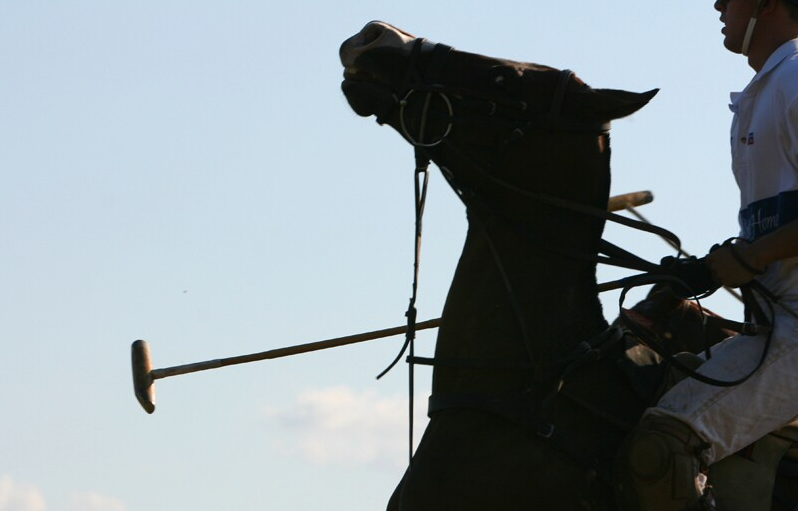Polo is an equestrian team sport for teams of four. A match consists of six, seven-minute-long periods, each known as a chukker, and teams try to score as many goals as possible through goal posts using a white, plastic ball… known as a ball. It dents slightly each time it’s struck. Teams switch ends after each goal.
Each of the four players has a handicap that adds up to a team handicap. (Scroll down for more about handicapping.) Handicaps are not just a classification for players. They are integral to keeping score. In scoring a match, the handicaps of each of the four players are added together, which adds to a handicap rating for the team. A team with a lower handicap will have what appears to be a goal advantage at the start of the match. For example, a 5-goal team playing a 8-goal team will start out with three-point lead on the board.
Players change horses after each chukker because of the extreme demands placed on the animals, which play no more than two chukkers each match.
The game begins with a throw-in and at halftime, spectators walk on the field in a tradition called "divot stomping" to repair the crevices created by the horse's hooves.
The game includes a right-of-way rule, which upholds the central concept of polo: the line of the moving ball. This line changes each time the ball is struck by a mallet, a flexible cane that bends and twists. The player who hit the ball generally has the right of way, and other players cannot cross the line of the ball in front of that player.
Players win the ball by hooking an opponent, riding off an opponent, bumping into the opponent or by stealing the ball with good stick work. Also like hockey, polo is a very physical sport.
Players wear knee pads to protect from flying balls and rough ride-offs and use a bit (most commonly one known as a gag) to control the horse.
Handicap
From the sport authority, polosport.com:
Polo Players are rated yearly by their peers in the [U.S. Polo Association] on a scale of minus-2 to 10 goals. All players, male and female, are rated under the same handicap system. The term "goal" does not refer to how many goals the player will score in a match but indicates the player's value to the team.
Player handicaps range from "Novice" to "Perfect" (10 goal). Often the letters "A", "B", and "C" are used instead of the numerical values (0, -1, -2).
- About two-thirds of the USPA-rated players carry a rating of 2 goals or less.
- Only a small number of players advance beyond 3 goals.
- A rating of 2 goals and above usually indicates a professional player.



